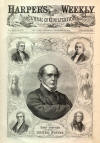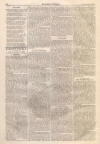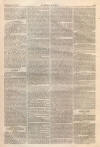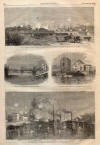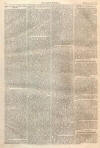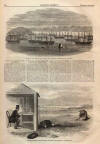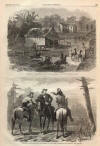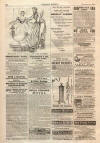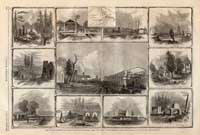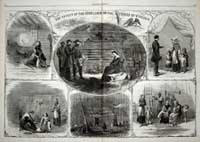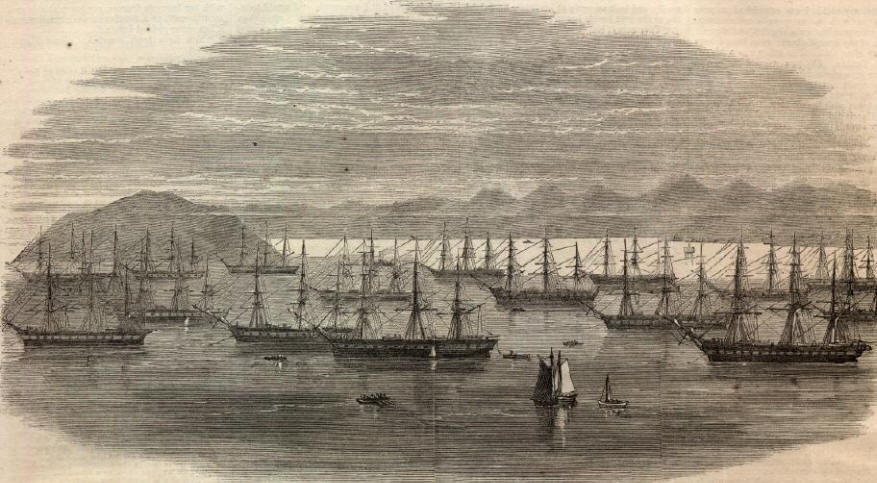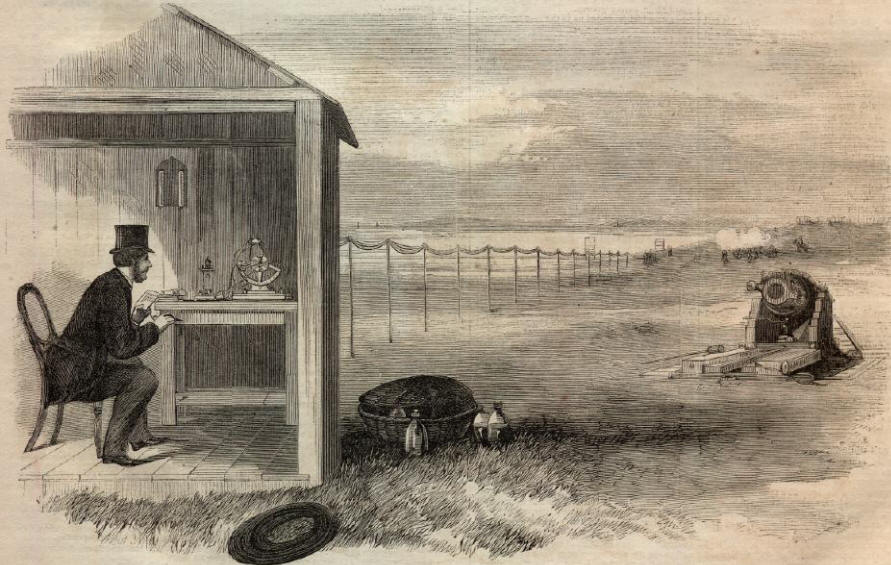|
This Site:
Civil War
Civil War Overview
Civil War 1861
Civil War 1862
Civil War 1863
Civil War 1864
Civil War 1865
Civil War Battles
Confederate Generals
Union Generals
Confederate History
Robert E. Lee
Civil War Medicine
Lincoln Assassination
Slavery
Site Search
Civil War Links
Civil War Art
Mexican War
Republic of Texas
Indians
Winslow Homer
Thomas Nast
Mathew Brady
Western Art
Civil War Gifts
Robert E. Lee Portrait
|
FLEET OF WHALERS IN THE PORT OF SAN FRANCISCO.—[SKETCHED BY M. C. PALMER.]
FLEET OF WHALERS AT SAN
FRANCISCO.
WE give herewith an
illustration representing the Fleet of Whalers in the port of San Francisco. Our
correspondent, in a letter dated October 29, says that during a few previous
days no less than twenty-four whalers had arrived from the Arctic ocean. The
presence of so many whalers in the port at one time had never before been known
; perhaps half a dozen on one occasion has been the highest number previously
reached. For several years past the whaling fleet has rather avoided San
Francisco, and which is chiefly indebted for its recent presence to the facility
afforded by this port for instant telegraphic communication with owners at New
Bedford, whose wishes as to the disposition of cargoes can thus be immediately
ascertained. The number of whales is said to be diminishing yearly, and eminent
scientific authorities have advocated a cessation of the fishery for a period of
years.
APPARATUS FOR MEASURING THE
VELOCITY OF PROJECTILES.
WE give on this page
an illustration of the
ELECTRO-BALLISTIC APPARATUS,
recently invented by
Major
NAVEZ, of the
Belgian Artillery, for measuring
the space of time a cannon ball would take in passing over a few yards. Let two
upright screens be placed before the gun, the first distant 30 yards and the
second 150 yards. Between the screens is 120 yards : what time is taken by the
cannon ball in passing from the first screen to the second? The same pendulum
always performs its vibrations, whatever be the extent of the arc, in the same
time. A seconds pendulum will tick seconds,
whether the arc passed over be ten or forty degrees. If, then, a pendulum can be
set in motion
when the cannon ball penetrates the first screen, and stopped when the second
screen is reached, the arc over which it passes during the interval would be an
exact measure of the time
occupied. As the whole arc, fully completed, is to the partial arc, so is the
time of describing the whole arc to the time of describing the partial arc.
The real thing to be accomplished is to start and stop the pendulum at precisely
the right moment. This is accomplished by the principle of magnetism. Two
pendulums are used, which, by means of a spring, are made to move in exact
unison. One of these is called the main pendulum; the other, which is smaller
and more delicate, the index pendulum. The main pendulum is connected with the
first screen by means of a magnetic line, going and returning, so as to form a
current. When the ball strikes the first screen the current between it and the
main pendulum is broken ; this pendulum, which has previously been held by the
magnet, is now, at the breaking of the current, set in motion, the index
pendulum keeping exact pace with it. Now the pendulums are in motion; but when
the ball strikes the second screen how are they to be stopped? A separate
contrivance, called the Con
junctor, is connected with this screen by a magnetic
current, which is broken by the passage of the ball. The Conjunctor is so
contrived that, at the breaking of this current, a new current is established
between a large magnetic battery and the index pendulum; and the moment this is
accomplished the latter is stopped, being attracted to the iron arc along which
it is moving. The new current
was established by the pressure of a steel needle downward into a jar of
mercury at the breaking of the current between the Conjunctor and the second
screen. The problem is now solved. Suppose that, when the index is stopped, two
degrees have been passed over of an arc
which, completed, would measure forty degrees; and suppose that our pendulum
ticks seconds. Then the time taken by the cannon ball in passing the 120 yards
is one-twentieth of a second, one yard being passed in one-twenty-four-hundredth
part of a second. By this contrivance
a skillful operator is able to measure pretty
accurately to the three-thousandth part of a second.
ELECTRO-BALLISTIC
APPARATUS FOR MEASURING THE SPEED OF CANNON BALLS.
|
